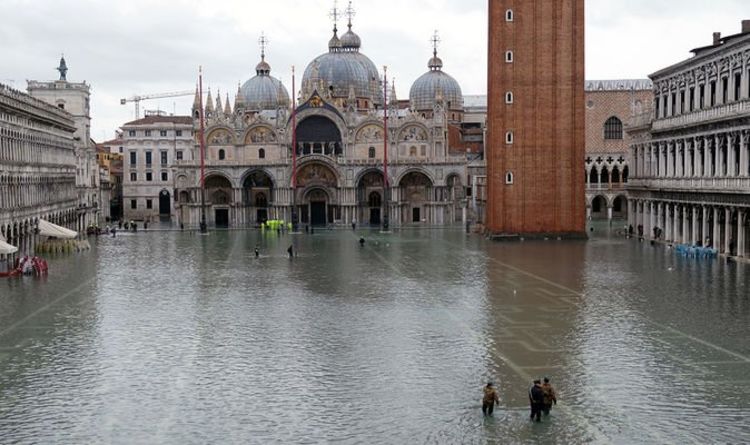
The devastating floods which hit Venice in November 2019 could be just the start of rising sea levels having an impact on the world’s tourist attractions, according to new research.
The which was conducted by leading hard landscaping manufacturer Marshalls, combined predictions from Climate Central on rising sea levels with TripAdvisor data on the most popular tourist attractions in major coastal cities to show which worldwide attractions are at risk of flood damage, repeatedly over the next 50 years.
With attractions such as The Bund waterfront promenade, Shanghai Tower and the Yu Garden helping to bring in 324 million visitors every year, the research highlights that all of the most popular tourist attractions in Shanghai would be at risk of regular flooding within the next 50 years based on current predictions. The Chinese municipality is battling against this potential future by creating a ‘sponge city’ of wetlands, green rooftops and rain gardens to ensure any encroaching water can be absorbed back into the land rather than running off back into storm drains and waterways.
| Cities | % of Tourist Spots at Risk of Flooding |
| Shanghai | 100% |
| Osaka | 80% |
| Alexandria | 60% |
| London | 40% |
Following just behind Shanghai is the Japanese port of Osaka, which shows 80% of key tourist attractions being at risk of flooding within the next 50 years. With attractions such as Dotonbori, Osaka Aquarium Kaiyukan and Universal Studios Japan all showing as, within the flood risk zone, the city is in danger of losing the estimated 11 million tourists who visit the region each year. Whilst the port already employs a mixture of dykes, flood gates, pumps and barriers to help fight against flooding, the risk of rising sea levels would leave the majority of these requiring updates to battle the increased high tides.
Alexandria in Egypt holds some of the most staggering historical sites for tourists to visit, however, the research shows that over half of the most significant tourist hot spots are at risk of being irrevocably damaged through flooding. With the Montaza Gardens, Fort Qaitbay, the Catacombs of Kom El Shoqafa and the Alexandra National Museum all showing as being within the flood risk zone, the $826 million dollars’ worth of tourism spending will be at risk alongside the multitude of artifacts and buildings at risk of damage. The 5.2 million population of Alexandra is regularly met with floods due to the rising sea levels and sinking of the Nile delta, which can have devasting effects to building foundations. Whilst the large line of concrete seas barriers known as the Corniche is designed to protect the city from the effect of rising sea levels, with the accelerated sea-level rise combined with the overall sinking, the predicted land at risk shown highlights the need for further work.
With so many of the key tourist spots dotted around the River Thames, it is surprising to see only 40% of London’s top tourist destinations at risk of flooding over the next fifty years. The data shows the Tower of London and the London Eye falling within the land at-risk zone, along with large sections of the English capital located south of the river, however, the majority of areas highlighted to be of interest to the 30 million annual visitors would be protected.
Chris Harrop, Director of Sustainability and Marketing at Marshalls, commented: “The Venice floods of November 2019 showed how susceptible some of the world’s most treasured cultural landmarks could be to the dangers of flooding."
“Whilst the coastal areas shown in the study all have various preventative plans in place to combat the impact of rising sea levels, it is just as important for building planners to utilise all available methods to ensure buildings are able to withstand the effects of flooding."
“The worldwide industry is already embracing these practices in part, as can be seen in Miami’s Brickell Centre utilising flood gates and elevated sea walls to protect the structure in case of future flooding. These structural implementations have then been combined with sustainable features such as a ‘climate ribbon’ that works as a cistern and can collect rainwater to help the numerous native plants planned into the complex."
“By utilising structural designs similar to the Brickell Centre, along with using materials such as permeable paving to ensure developed areas allow water to permeate naturally into the ground, building planners can help ensure that coastal cities are best prepared for any potential future flooding.”